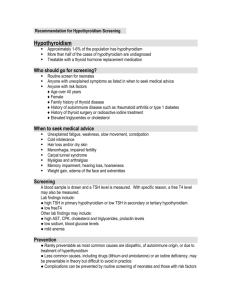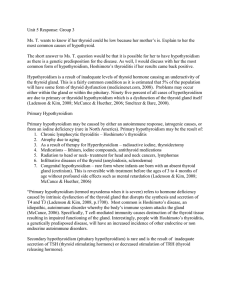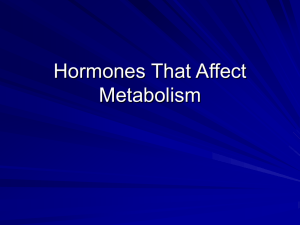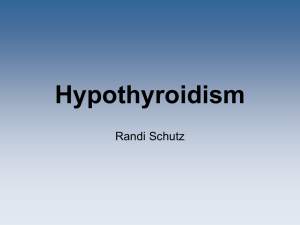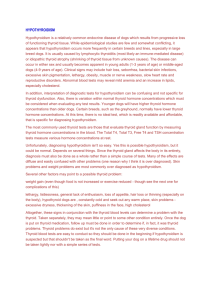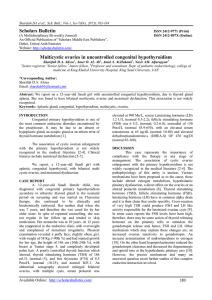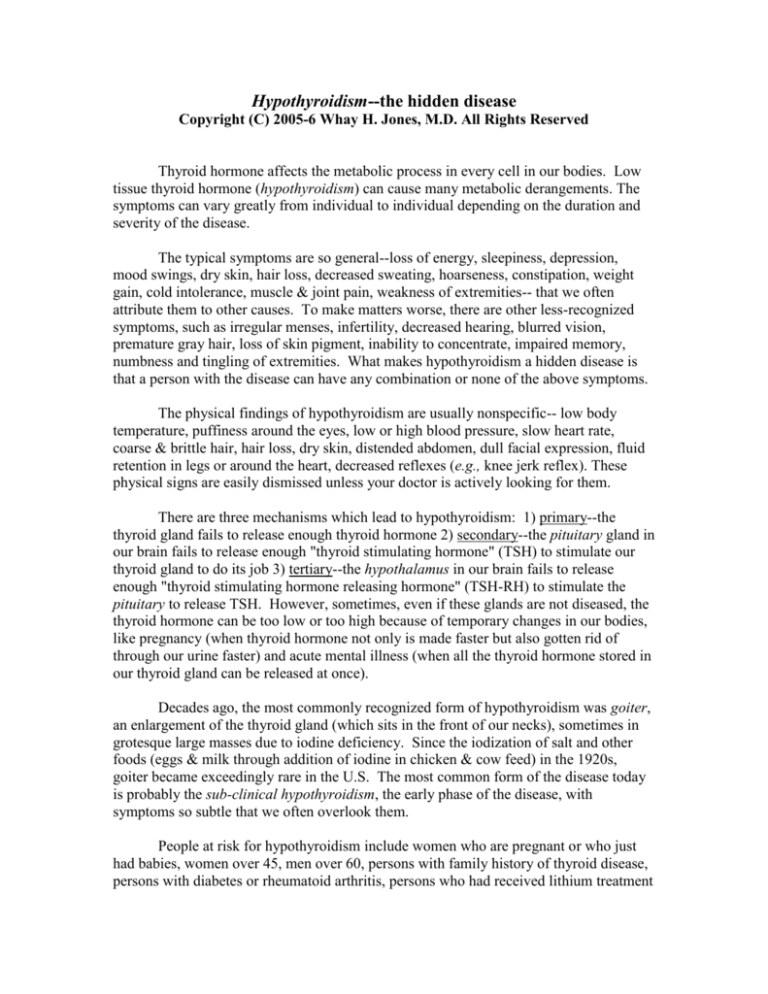
Hypothyroidism--the hidden disease
Copyright (C) 2005-6 Whay H. Jones, M.D. All Rights Reserved
Thyroid hormone affects the metabolic process in every cell in our bodies. Low
tissue thyroid hormone (hypothyroidism) can cause many metabolic derangements. The
symptoms can vary greatly from individual to individual depending on the duration and
severity of the disease.
The typical symptoms are so general--loss of energy, sleepiness, depression,
mood swings, dry skin, hair loss, decreased sweating, hoarseness, constipation, weight
gain, cold intolerance, muscle & joint pain, weakness of extremities-- that we often
attribute them to other causes. To make matters worse, there are other less-recognized
symptoms, such as irregular menses, infertility, decreased hearing, blurred vision,
premature gray hair, loss of skin pigment, inability to concentrate, impaired memory,
numbness and tingling of extremities. What makes hypothyroidism a hidden disease is
that a person with the disease can have any combination or none of the above symptoms.
The physical findings of hypothyroidism are usually nonspecific-- low body
temperature, puffiness around the eyes, low or high blood pressure, slow heart rate,
coarse & brittle hair, hair loss, dry skin, distended abdomen, dull facial expression, fluid
retention in legs or around the heart, decreased reflexes (e.g., knee jerk reflex). These
physical signs are easily dismissed unless your doctor is actively looking for them.
There are three mechanisms which lead to hypothyroidism: 1) primary--the
thyroid gland fails to release enough thyroid hormone 2) secondary--the pituitary gland in
our brain fails to release enough "thyroid stimulating hormone" (TSH) to stimulate our
thyroid gland to do its job 3) tertiary--the hypothalamus in our brain fails to release
enough "thyroid stimulating hormone releasing hormone" (TSH-RH) to stimulate the
pituitary to release TSH. However, sometimes, even if these glands are not diseased, the
thyroid hormone can be too low or too high because of temporary changes in our bodies,
like pregnancy (when thyroid hormone not only is made faster but also gotten rid of
through our urine faster) and acute mental illness (when all the thyroid hormone stored in
our thyroid gland can be released at once).
Decades ago, the most commonly recognized form of hypothyroidism was goiter,
an enlargement of the thyroid gland (which sits in the front of our necks), sometimes in
grotesque large masses due to iodine deficiency. Since the iodization of salt and other
foods (eggs & milk through addition of iodine in chicken & cow feed) in the 1920s,
goiter became exceedingly rare in the U.S. The most common form of the disease today
is probably the sub-clinical hypothyroidism, the early phase of the disease, with
symptoms so subtle that we often overlook them.
People at risk for hypothyroidism include women who are pregnant or who just
had babies, women over 45, men over 60, persons with family history of thyroid disease,
persons with diabetes or rheumatoid arthritis, persons who had received lithium treatment
or radiation treatment to the head & neck. In sub-clinical hypothyroidism, the only
findings may be elevated cholesterol, impaired memory and decision making ability, and
faster deterioration of heart function in patients with heart disease; all of which are
reversible with thyroid hormone replacement. Increased public awareness of how
diversely hypothyroidism can present is the first step to reduce missed opportunities to
treat this reversible condition.
Authored by:
Whay H. Jones, M.D.
Board Certified Family Physician
July 1st, 2005




